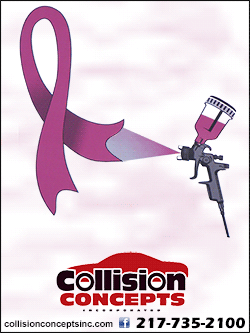|
 That’s due to several things: That’s due to several things:
TNBC tends to be more aggressive than other common types of
breast cancer. Women usually don’t learn
they have it until the cancer has already spread to other parts
of the body (metastasized), so it may be more complicated to treat.
Treatment options remain limited. Hormone
therapies and targeted therapies that help treat people with some
types of breast cancer, don’t work for a woman with TNBC. Doctors
use chemotherapy to treat these patients, but it isn’t very
effective and may have a lot of side effects.
If doctors had a way to identify women at risk for
TNBC, they might be able to find cancer earlier, before it spreads.
And, if doctors had a way to personalize treatment for women with
TNBC, they might be able to improve a woman’s outlook and survival.
One approach researchers are using to identify women at risk for
TNBC and possible treatment options for TNBC is by studying
inherited mutations in cancer genes.
Understanding Breast Cancer Risk Genes

A team of researchers in Rochester, Minnesota recently discovered
mutations in 5 genes that seem to increase the risk for TNBC. These
genes are known by several names: breast-cancer-risk genes,
cancer-predisposition genes, and cancer-susceptibility genes. The
research team was led by Fergus J. Couch, PhD, the Zbigniew and Anna
M. Scheller Professor of Medical Research and Chair of the Division
of Experimental Pathology and Laboratory Medicine at the Mayo
Clinic.
About the Study
About 10 to 15 percent of triple-negative breast cancers in
Caucasians test positive for mutations in the BRCA1 gene. In the
African American population, about 35 percent do.
Until recently, BRCA1 was the only gene linked to TNBC. In the past,
researchers weren’t able to identify other breast cancer risk genes,
because the technology was too cumbersome to check the genes in
large numbers of people, Couch says.
“We used to check one gene at a time, which was very time consuming.
But about 4 or 5 years ago, sequencing technology changed
dramatically, so now we’re able to do these gene panels and check
many genes at a time.”
Couch and his research team used a technology called multigene panel
testing on blood samples taken from people with triple-negative
breast cancer. The technology looks at multiple genes
simultaneously, looking for mutations that could be linked to breast
cancer.
The team studied how often mutations occurred in people with TNBC
compared with a control group of people who didn’t have cancer. This
was the first study to identify which mutated genes are linked to a
highly increased risk for TNBC. They are: BARD1, BRCA1, BRCA2,
PALB2, and RAD51D.
Women who carried any of these gene mutations had a more than 20%
lifetime risk for any type of breast cancer. By comparison, women in
the general population have about a 12% —or 1 in 8—lifetime risk of
getting breast cancer.
“That means,” Couch says, “doctors should consider that women who
have any of these mutations will have an increased risk for triple
negative breast cancer. Also if a woman with breast cancer has one
of these mutations, her doctor may need to consider using specific
treatments.
The team was not able to learn why African American women have an
increased risk for TNBC and suggest that larger studies with African
American patients be done. The team also
found strong support that 3 other mutated genes (BRIP1, RAD51C, and
RAD51D) moderately increase the risk for TNBC, when they were
previously thought to only cause ovarian cancer.
 What the
Results Could Mean
With the identification of these TNBC genes,
doctors who are concerned about risks of breast cancer in their
patients can focus on using cancer genetic tests that include this
set of genes. And their identification allows researchers to now
focus on developing drugs that could target specific gene mutations
in tumors.
[to top of second column] |

Why It's Called Triple Negative
Most breast cancers are
classified by 3 substances that can affect the
cancer’s growth:
- The female hormone
estrogen
- The female hormone
progesterone
- The human epidermal
growth factor receptor 2 (HER2)
Estrogen and progesterone
bind with their specific receptors and move to the
cell nucleus and alter the activity of many genes.
That can result in some genes helping cancers grow.
The binding of HER2 and
its receptor can also switch on many genes and
influence how much a cancer cell grows.
If the cancer cell doesn’t
have a receptor for estrogen, then estrogen doesn’t
help the cancer grow. That cancer is classified as
estrogen-receptor negative (ER negative).
The same is true if the
cancer cell doesn’t have a receptor for progesterone
or for HER2. If a breast cancer cell doesn’t have
receptors any of these, the cancer is called triple
negative.
It may seem like no
receptors would be good because the hormones and
HER2 can't help the cancer grow. But having a
triple-negative breast cancer isn’t good.
Here's why: current breast
cancer treatments either reduce the amount of these
hormones or block the receptors. That means hormone
therapy won’t work against TNBC and neither will
drugs that target HER2.
|
New guidelines for gene testing for those at risk
for triple-negative breast cancer. Current guidelines from the
National Comprehensive Cancer Network (NCCN) recommend that people
be tested for BRCA1 and BRCA2, if they have an increased risk
for breast cancer due to a personal or family history of cancer such
as:
- A family history of
breast or ovarian cancer
- A diagnosis of TNBC
at age 60 or younger
- A diagnosis of
breast cancer under age 40
There are no guidelines to test people for
predisposition genes other than BRCA1 or BRCA2. However, this may
change as more information about which genes increase risk of breast
cancer becomes available.
Plus, only mutations in certain genes qualify
women for breast MRI in addition to mammograms for screening and
early cancer detection. Some of the genes indentified by Couch are
not currently on that list. “The hope is that breast cancer
screening guidelines might change based on our findings,” Couch
says. “Those at high risk could then get additional screening with a
breast MRI, which studies show can improve survival,” he says.

Drugs for treatment of people who have gene
mutations (called mutation carriers) and who have been diagnosed
with triple-negative breast cancer. “This enhanced understanding of
the genetic risks for TNBC opens the door to test the effectiveness
of current targeted treatments,” Couch says.
For instance, there’s some evidence that BRCA1 and
BRCA2 carriers with TNBC might respond well to platinum agents, such
as cisplatin (Platinol AQ) or carboplatin (Paraplatin).
Mutation carriers may also be helped by a type of
drug called PARP inhibitors. PARP is an enzyme that helps both
healthy and cancer cells repair DNA damage so they can live.
Blocking PARP in cancer cells prevents them from repairing DNA
damage, ultimately leading to their demise.
Some of the new TNBC genes work the same way as
BRCA1 and BRCA2, so studies are underway to learn if tumors with
mutations in these other genes can also benefit from platinum drugs
or PARP inhibitors.
[American Cancer Society Newsroom] |